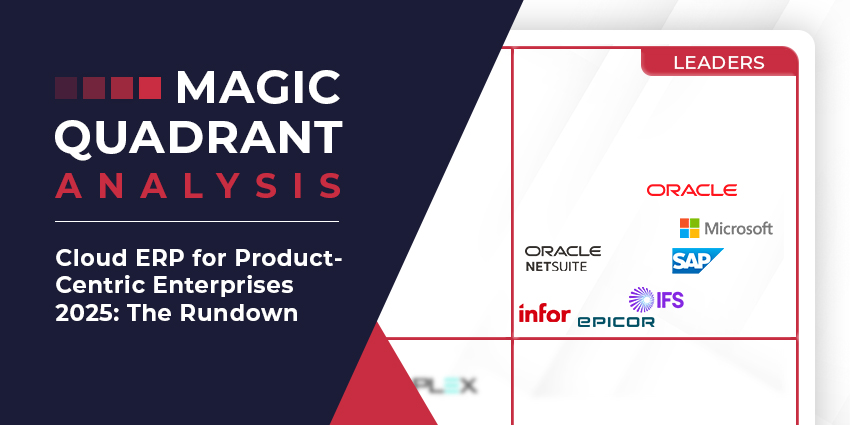Today’s businesses need data more than ever, but how they collect and use it often varies. Some still measure performance on spreadsheets, while others are building systems that respond before the numbers finish loading. That difference between lag and real-time response is exactly where business intelligence now operates in the enterprise.
The question “What is Business Intelligence?” no longer gets a simple answer. In 2025, it covers everything from anomaly detection in global supply chains to CX performance tracking in real time. It’s the core infrastructure powering marketing optimization, customer retention, financial forecasting, and workforce strategy.
Enterprise priorities have shifted. Leaders want data that talks across silos, insights that surface without needing to ask the right question first, and tools that fit the pace of operations.
By 2032, the BI software market will be worth over $63.20 billion, with growth driven by new insight opportunities, AI, and consolidation.
Tomorrow, business intelligence won’t be a tool you buy, but a capability you depend on.
What is Business Intelligence?
Business intelligence used to mean static dashboards. Weekly reports built by analysts. A place to track metrics after the fact. But the question “What is Business Intelligence?” has a very different answer in 2025.
Now, it’s the connective architecture that lets companies make decisions at the speed of the customer, or the market.
Today, business intelligence refers to the platforms and processes that collect, organize, and analyze data, then translate that data into insight. But modern BI software solutions do more than describe what happened. They predict what’s likely to happen next. And recommend what to do about it.
Gartner now defines the space as Analytics and Business Intelligence (ABI), a reflection of how much the tools have evolved. ABI platforms model data, visualize trends, surface anomalies, and enable users to share insights across the business. The goal isn’t just analysis. It’s action.
The best platforms now include:
- Natural language querying for non-technical teams
- Predictive models that adapt as new data flows in
- Real-time alerts that flag issues before they escalate
- Embedded BI data analytics inside CRM, ERP, and contact center tools
They’re also supporting more team members – not just marketing and finance. BI is now embedded in everything from workforce optimization and feedback loops to conversational AI systems and customer data platforms.
The answer to “What is BI?” comes down to this: it’s the infrastructure that turns information into direction. Insight into movement. Data into strategy.
The BI and Data Analytics Convergence
There’s no clean dividing line between business intelligence, and business analytics anymore. Now they’re part of the same system.
BI acts as the operational layer, with structured data, metrics with clear ownership, and dashboards that summarize what’s happening across the business: sales, service, operations, finance.
BI data analytics focuses on tracking KPIs, spotting anomalies, flagging when numbers move in the wrong direction. It gives teams a common reference point. It explains the now.
Where BI often deals in certainty, what happened and when, analytics leans into probabilities. It asks broader questions: what’s likely to happen next? What happens if we change this variable? It’s less about reports, more about scenarios.
That’s particularly true now AI has entered the picture. Some companies, like Salesforce are even introducing agentic AI systems that can dive into data, explore trends, and act on what they find.
BI shows the problem, analytics shows the trajectory, and suggests what to do next.
What is Business Intelligence? How Does BI Work?
Business intelligence doesn’t begin with insight. It begins with chaos.
For most enterprise teams, data lives in too many places: CRMs, ERPs, support platforms, ad servers, spreadsheets. Sales logs don’t always talk to marketing funnels. Contact center transcripts don’t sync with NPS scores. That’s where BI software solutions come in.
- Connect the Sources: Every BI system starts with integration. That means pulling in data from across the stack, structured and unstructured, internal and third-party. CRM pipelines, campaign performance, call logs, shipment delays, stock levels, customer satisfaction scores.
- Clean and Organize the Data: BI tools run that data through an ETL process: Extract what’s useful, transform it into a consistent format, and load it into a centralized warehouse. Many enterprises now use lakehouse architecture, which supports both structured data (like transactions) and semi-structured data (like support transcripts or clickstreams).
- Analyze, Model, and Detect: Once the data is in shape, BI platforms start building models. Some are straightforward, trendlines, comparisons, forecasts. Others are more advanced: anomaly detection, segmentation, and AI predictive scoring.
- Deliver Insights Where They’re Needed: It’s not enough to have good analytics. Teams need to see them in the right place. That’s why modern business intelligence platforms focus on distribution: Dashboards for executives, real-time alerts for service teams, and embedded widgets.
- Close the Loop: Once teams act on insight, BI platforms log the outcome. That data becomes part of the next cycle. This loop: observe, analyze, act, learn, is what turns business intelligence from a tool into a system. That system makes the entire organization more responsive, aligned, and informed.
It’s not just about tracking performance anymore. It’s about staying ahead of it.
What is Business Intelligence Used For? Use Cases
Business intelligence doesn’t look the same in every industry. The tools might overlap, but the stakes, workflows, and decisions are different. So are the blind spots, and that’s where BI does its best work, illuminating what would otherwise go unseen.
BI in Retail
In retail, timing is everything. Inventory levels. Shelf turns. Promotional lift. A leading retail chain uses BI software solutions to track buying patterns by region, forecast demand by SKU, and adjust stock distribution daily. The result is fewer markdowns, tighter margins, and a faster response to what customers are actually buying.
BI in Manufacturing
Manufacturing doesn’t tolerate delay, or waste. A component supplier uses embedded sensors to feed data into a live BI dashboard. Slight temperature shifts in one factory line? Flagged. Rising defect rates from a supplier in Korea? Visualized by location and time. Procurement sees it first, before the CFO hears it last.
BI in Finance
In finance, the pressure is different. Mistakes don’t cost trust. An investment firm builds a fraud detection model based on historical transaction data and behavioral signals. High-risk patterns now surface in seconds. Before, they surfaced in audits.
BI in Healthcare
Healthcare lives in contradiction: more data than ever, less time to use it. A hospital uses business intelligence software to predict bed demand based on seasonal shifts, flu outbreaks, and local event schedules. They now run leaner staffing rosters, without running short.
BI in Telecom
In telecom, churn isn’t just a number. It’s the signal that something’s broken. Major carriers use BI platforms to track usage dips by segment, layering in NPS scores and last call resolution outcomes. When support fails, the system knows before the subscriber leaves.
BI in Government
Government needs visibility. But it also needs accountability. A city council uses BI dashboards to track project costs, department performance, and service response times. That data doesn’t stay in reports, it’s published for residents, real-time.
BI in Education
In education, the pressure is on outcomes, at both student and system levels. School districts use BI platforms to monitor student performance, track engagement with digital tools, and assess curriculum effectiveness by demographic. Real-time insight enables faster interventions and long-term planning.
What is Business Intelligence? Top BI Platforms
The list of business intelligence vendors isn’t short. But the list of platforms that genuinely solve enterprise problems is more refined. Today, some of the biggest vendors include:
- Microsoft Power BI: It’s deeply baked into Microsoft 365 and Azure, which means less friction for teams already living in Outlook, Teams, or Dynamics. The pricing model still undercuts most competitors, and the AI-powered features have matured quickly, especially the way Power BI now handles natural language queries across structured and semi-structured datasets.
- Salesforce Tableau: This platform been reshaped to work more natively inside CRM environments, with AI agents. Sales and service teams get live, actionable data without toggling platforms. Meanwhile, analytics teams still rely on it for deeper exploration, especially in sectors like healthcare, financial services, and education, where dashboards need to tell stories, not just track metrics.
- Qlik: A growing presence in BI, Qlik’s associative engine makes it easier to explore nonlinear relationships. That’s perfect when you don’t know what you’re looking for yet. That’s a major asset in supply chain risk modeling, service diagnostics, or anything requiring fast pivots. Its “active intelligence” model pushes updates continuously, not just on refresh.
Plenty of other major vendors are stepping up their strategy too, from IBM and SAP, to Google, Amazon Web Services, Zoho, and Oracle. Want a closer look? Visit the BI market map.
What to Look For in a BI Platform
Choosing a business intelligence platform isn’t about ticking off features. It’s about knowing what the business needs to see, and how fast it needs to see it.
The key things to remember?
- Integration isn’t optional: CRM data lives in one place, support tickets in another. A good BI software solution connects across systems: legacy and modern, structured and not. It also needs to play well with your stack.
- Accessibility matters more than features: A tool is only as useful as the number of people who use it. Look for platforms that support self-service BI, natural language querying, and role-based dashboards that make sense to everyone.
- Governance is vital: Data freedom is important. But so is accuracy, lineage, and compliance. The best platforms give teams access without letting data quality slip. Think version control. Audit trails. Permissions. Especially if your industry doesn’t get second chances when it comes to reporting.
- Speed changes outcomes: In many industries, real-time data is the difference between fixing something and apologizing for it later. That could mean streaming telemetry data into a BI dashboard. Or simply refreshing sales numbers every 15 minutes instead of every Monday within a CCaaS platform.
- AI is now crucial: The smartest BI software solutions now come with machine learning baked in. Not as a separate module, but as part of the core user experience. That means auto-generated insights, real-time anomaly detection, forecast modeling, and even natural language prompts.
The ROI of True Business Intelligence
The question isn’t just “what is business intelligence?” it’s why does it matter?
The upside of business intelligence isn’t just “better decisions.” It’s about making those decisions when they make the biggest impact. What BI and ABI platforms deliver today is:
- Visibility across silos: Most businesses don’t suffer from lack of data. They suffer from data in the wrong places. BI platforms break down silos by centralizing access.
- AI-powered decision support: Today’s BI data analytics engines do more than visualize data. They learn from it. Dashboards that flag emerging issues. Forecasts that account for seasonality, behavior, and external inputs. Even prescriptive alerts can now be built into live business systems.
- Lower operating costs, higher agility: A well-built BI software solution tightens operations. The more companies learn by connecting CRM, WEM, and various other tools, the more effective they are at planning for success and reducing waste.
- More consistent CX: For customer-facing teams, business intelligence isn’t just about performance metrics. It’s about understanding what’s happening across the entire journey. If support call volume jumps, and CSAT drops, and NPS takes a hit, BI connects those dots.
- Faster response times: When the signal is clear and fast, the action can be too. That might mean reallocating spend mid-quarter. Fixing an ops issue before the CFO gets the numbers. Or spotting a churn risk before the contract’s up.
What is Business Intelligence? Tips for Implementation
Rolling out a business intelligence program starts with alignment.
The companies that get it right build a strategy, grounded in business goals, cross-functional use cases, and a shared understanding of what “insight” actually means.
Start with business questions, not reports
The most successful BI projects begin by defining outcomes. What does the team need to know faster? What’s being missed today? What decisions are still made on gut feeling? Map these first, then build the reporting structure around them.
Appoint a cross-functional BI lead
BI is inherently cross-departmental, and that means someone needs to own it, not just technically, but operationally. Choose a leader who understands the data, but also speaks the language of sales, ops, finance, and CX. Someone who can broker priorities and keep scope from drifting.
Establish governance early
Governance isn’t just about compliance. It’s also about trust. Define who owns what. Build version controls. Standardize definitions. Make sure that “customer lifetime value” means the same thing in every dashboard. Without that clarity, insight doesn’t deliver.
Invest in training, then reinforce it
BI rollouts often struggle because the rollout ends too soon. Make training part of the implementation. Not just one session, but a framework. Real-world use cases. Office hours. Power user circles. Adoption will follow.
Focus on iteration, not perfection
Companies won’t get every metric right the first time. That’s fine. What matters is building a feedback loop, so users can flag what works, what doesn’t, and what needs to evolve. The BI program should grow with the business, not outpace or lag behind it.
Future Trends in Business Intelligence
Business intelligence used to be about historical reporting. Now it’s about predictive awareness. In 2025, the conversation around BI has evolved, from dashboards and KPIs to ecosystems, autonomy, and embedded intelligence. The trends already emerging:
- Advanced AI: Not just generative AI systems that can convert raw data into graphs, but agentic AI solutions that can monitor insights autonomously, inform the right people at the best times, and act on what they discover.
- Composable stacks: Buyers are moving away from monolithic platforms. Instead, they’re building modular BI ecosystems, mixing and matching tools for ingestion, storage, modeling, visualization, and automation. This composable model offers more control. It lets teams upgrade faster, swap components, and avoid vendor lock-in.
- BI embedded: Instead of pulling data from systems, BI is now pushed directly into them. Contact center supervisors get alerts inside their agent console. Sales reps see account health scores inside their CRM. Ops managers get predictive alerts without logging into a dashboard.
- Data culture over data control: In the past, control equaled accuracy. Today, culture delivers more value. The most advanced teams aren’t just building dashboards. They’re building confidence by training departments to ask better questions, stress-test assumptions, and rely on data before gut instinct.
Want to stay ahead of the latest trends? Download the latest market research.
What is Business Intelligence? Smarter Than Ever
Business intelligence isn’t just a reporting layer, it’s a competitive advantage.
The systems don’t just track activity. They connect departments, streamline decisions, and automate insight. They make it easier to act before the window closes.
For enterprise teams, the right platform means fewer delays, smarter pivots, tighter CX, and sharper financial control. But it also means clarity, about what’s happening now, what might happen next, and where attention should go.
Ready to Choose Smarter BI? CX Today is here to help:
- Join the Community: Be part of a CX-driven leadership network. Compare insights, strategies, and vendor experiences with peers.
- Test the Tech: Explore demos, talk to vendors, and discover the trends shaping the BI industry at upcoming CX events.
- Plan Your Purchase: Use the CX Marketplace to explore top vendors in business intelligence, CRM, CDPs, and more.
Or dive into our full CX technology stack guide for everything enterprise buyers need to future-proof customer experience.







